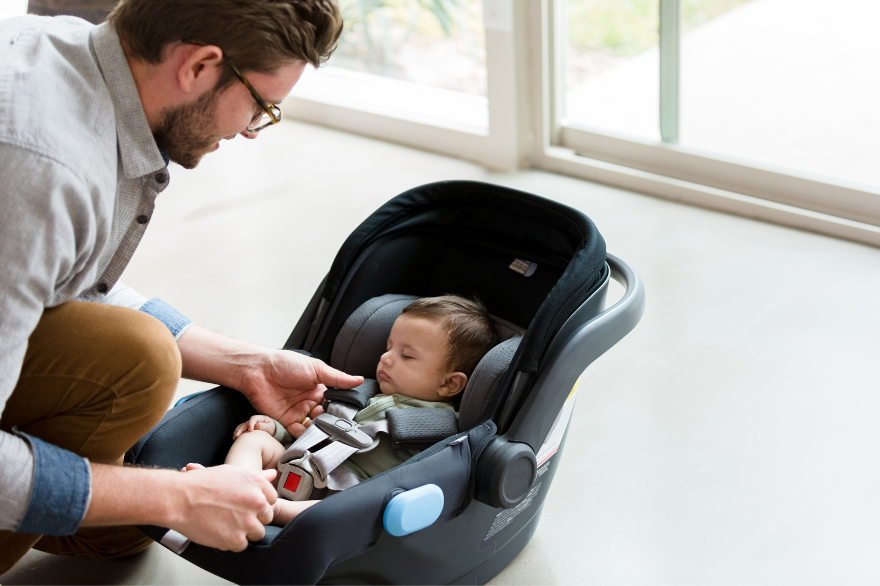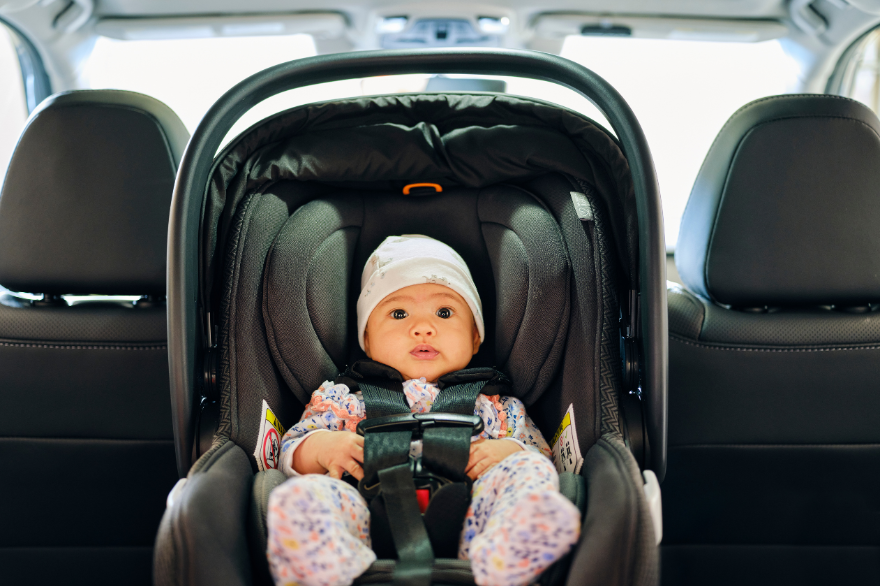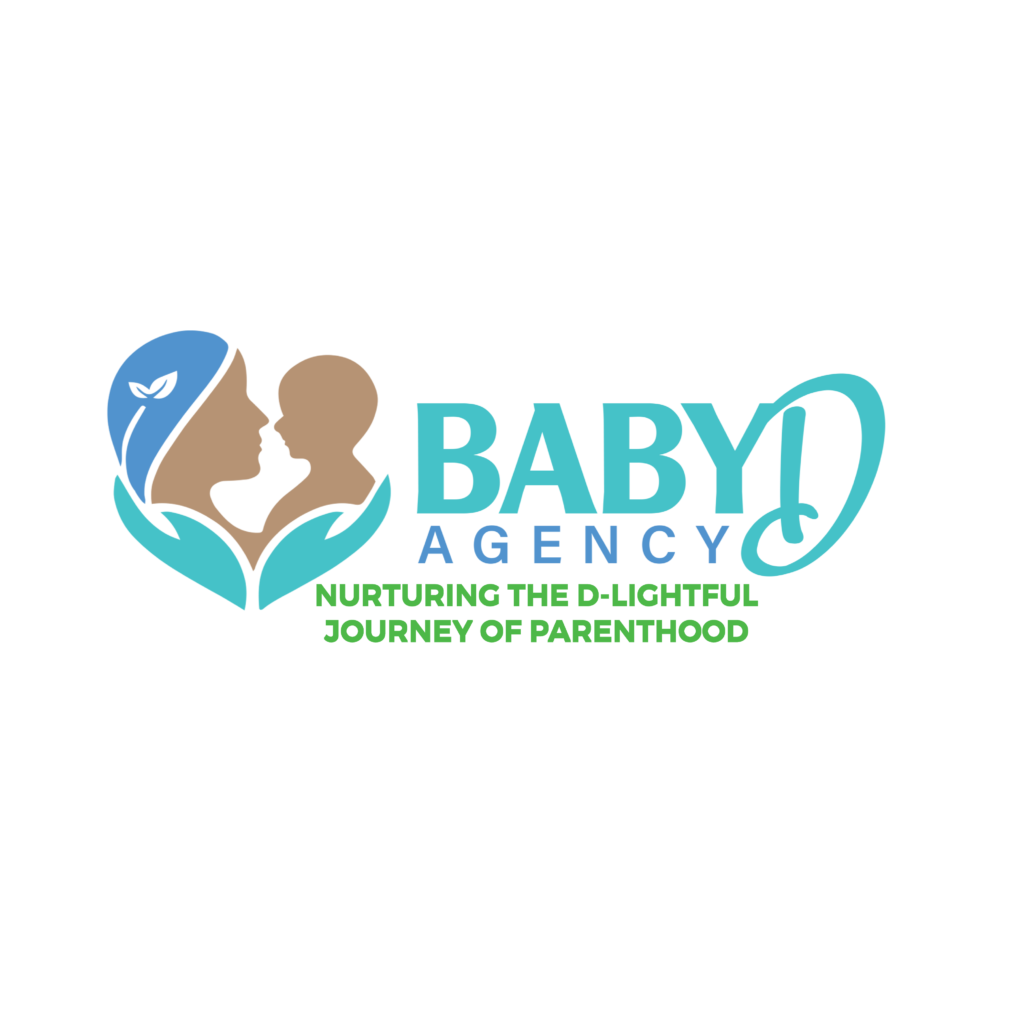As a new parent, one of the challenges I faced was feeding my newborn while on the go. Whether it was a long car ride or a quick trip to the grocery store, I needed to find ways to make sure my little one was both comfortable and safe.
In this blog post, I’ll share some tips and tricks I learned about feeding a newborn in a car seat.
Overview of feeding a newborn in a car seat
Feeding a newborn in a car seat can be tricky, but with a bit of preparation, it’s doable. Some things to keep in mind include:
- Timing: Try to time your car trips around your baby’s feeding schedule whenever possible.
- Supplies: Bring plenty of supplies (e.g., bottles, formula/breast milk, burp cloths) so you don’t need to worry about running out.
- Comfort: Make sure your baby is comfortable in their car seat before you start feeding them.
Importance of safety and proper positioning
While feeding your newborn in a car seat can be convenient, safety should always be your top priority. Some things to keep in mind include:
- Avoid feeding your baby while the car is moving. Instead, pull over or wait until you’ve reached your destination.
- Make sure your baby’s head is properly supported and not slumped forward, which can make it difficult for them to breathe.
- Check the straps on your baby’s car seat regularly to ensure they are properly adjusted.
By following these tips, you can help ensure that feeding your newborn in a car seat is both safe and comfortable for everyone involved.

Feeding a Newborn in a Car Seat: Tips and Tricks
Being a new parent can be overwhelming, particularly when it comes to feeding your newborn while on the go. Whether it’s a long road trip or a quick errand, you want to make sure that your little one is both comfortable and safe. As a mom with experience, I have some tips and tricks that may be helpful for you!
Overview of Feeding a Newborn in a Car Seat
Feeding a newborn in a car seat can seem impossible, but with some preparation, it’s doable. Here are some things to keep in mind:
- Try to plan your car trips around your baby’s feeding schedule if possible.
- Bring extra supplies like bottles, formula or breast milk, and burp cloths.
- Ensure that your baby is comfortable in their car seat before starting to feed them.
Safety Guidelines
American Academy of Pediatrics Recommendations
The American Academy of Pediatrics (AAP) advises against feeding your baby while the car is in motion. Instead, it recommends that you pull over to the side of the road or wait until you reach your destination.
Proper Use of Car Seat and Harness
To ensure that your baby’s head is properly supported and not slumped forward, make sure that the car seat is reclined at an angle between 30 and 45 degrees. Additionally, remember to always check your baby’s car seat straps to make sure they are correctly adjusted and secure.
By following these tips, you can ensure that feeding your newborn in their car seat is not only safe but also comfortable for everyone involved.
Feeding a Newborn in a Car Seat: Tips and Tricks
Hey there, fellow new parents! As a mom who has been through the daunting task of feeding my newborn in a car seat, I have some tips and tricks to make it a bit easier for you.
Overview of Feeding a Newborn in a Car Seat
Feeding your newborn in a car seat can be tricky, but with some foresight and preparation, it’s manageable. Here are a few things to keep in mind:
- Try to plan your car trips around your baby’s feeding schedule if possible.
- Always bring extra supplies like bottles, formula or breast milk, and burp cloths.
- Ensure that your baby is comfortable in their car seat before you start feeding them.
Risks of Feeding in a Car Seat
Choking hazards
Feeding your baby in a car seat can present choking hazards. If your baby’s head slumps forward while they are feeding, they may not be able to swallow properly, leading to choking. To avoid this, make sure the car seat is reclined at an angle between 30 and 45 degrees to keep your baby’s head from slumping.
Breathing difficulties and oxygen deprivation
If your baby is positioned incorrectly in their car seat while being fed, they may struggle to breathe properly. This can result in oxygen deprivation, which can be fatal. To prevent this, follow the American Academy of Pediatrics (AAP) recommendation of pulling over to feed your baby, rather than feeding them while the car is in motion.
By keeping these risks in mind and following the guidelines for safe feeding practices, you can ensure that your baby stays safe and comfortable while being fed in their car seat.
Hey everyone, I know how overwhelming it can be to feed a newborn in a car seat. As a mom who’s been through it, I want to share some tips and tricks to make it easier for you.
Feeding a Newborn in a Car Seat: Tips and Tricks
Feeding your little one in a car seat can be challenging, but with some preparation, you can make it manageable. A few things to keep in mind include planning your car trips around your baby’s feeding schedule, bringing extra supplies like bottles, formula, or breast milk, and ensuring your baby is comfortable in their car seat before starting.
Risks of Feeding in a Car Seat
While feeding your baby in a car seat is doable, there are some risks to keep in mind. There’s a potential for choking if your baby’s head slumps forward, making it difficult for them to properly swallow. Additionally, if your baby isn’t positioned correctly in their car seat while feeding, they can experience breathing difficulties and oxygen deprivation, which can be fatal.
Pull over and feed in a safe location
To prevent these risks, consider following the guidelines set by the American Academy of Pediatrics (AAP) and pull over in a safe location to feed your baby. This way, you can ensure that your little one is safely positioned and able to breathe properly while feeding.
Plan ahead and feed before leaving
Another alternative is to plan and feed your baby before leaving, especially if you know that your car trip will take longer than usual. This way, you can prevent any potential risks that come with feeding during a car ride.
I hope these tips help make feeding your newborn in a car seat a bit more manageable. Remember to always prioritize your baby’s safety while on the road.
Hi, fellow parents! Having been through the stress of feeding my newborn in a car seat, I know how tough it can be. However, with some preparation, there are ways to make it easier and safer.
When is it Necessary to Feed in a Car Seat?
Long car trips and emergencies
Sometimes, it’s unavoidable to feed your baby in a moving car. Long car trips and emergencies may require you to feed your baby while in their car seat. In these cases, it’s important to plan by ensuring that your baby is properly positioned and that you have enough supplies like bottles, formula, or breast milk.
Assessing the risks and benefits
While feeding your baby in a car seat can be convenient, it’s important to assess the risks and benefits. There is a potential for choking or breathing difficulties if your baby isn’t positioned correctly or if they slump forward. In such cases, consider pulling over in a safe location to feed your little one. Alternatively, try feeding them before leaving when possible.
Remember to prioritize your baby’s safety while on the road. With these tips in mind, feeding your newborn in a car seat can certainly be manageable.
Hey there, fellow parents! As a mom who has experienced feeding my newborn in a car seat during long car trips, I feel you when it comes to the stress and challenges. But with some tips and preparation, it can be made easier and safer.

When is it Necessary to Feed in a Car Seat?
Long car trips and emergencies
Sometimes, feeding your baby while in a moving car is unavoidable. During long car trips or emergencies, like sudden hunger pangs or diaper blowouts, you may need to feed your little one while in their car seat. Make sure to plan by checking their positioning and ensuring that you have enough supplies like bottles, formula, or breast milk.
Assessing the risks and benefits
While it can be convenient, it’s essential to assess the risks and benefits of feeding your baby in a car seat. Slouching or slumping incorrectly can potentially lead to breathing difficulties or choking hazards. Consider pulling over in a safe location to feed your baby or feed them before leaving when possible to avoid unnecessary risks.
Correct Positioning in a Car Seat
Avoiding slouching and slumping
To prevent your baby from slouching or slumping while feeding, make sure that their car seat’s straps and harnesses are adjusted correctly. Avoid positioning their head too far forward or leaning their head to one side as it may compromise their airway.
Optimal angles and support
Additionally, aim for an optimal feeding angle of around 45 degrees. You can also use a rolled-up towel or a breastfeeding pillow for additional support. Ensure that the car seat is correctly reclined to prevent any choking hazards if the milk flows too fast.
Remember, safety should always be a top priority when on the road. By keeping these tips in mind, feeding your newborn in a car seat can be easy and manageable.
Hey fellow parents, as a mom who has gone through the challenge of feeding my newborn in a car seat during long road trips, I completely understand the stress that comes with it. However, with some simple tips and preparation, it can become a lot more comfortable and safer for your little one.
Tips for Safe and Comfortable Feeding in Car Seat
Prepare ahead of time
Whether it’s a long car trip or an emergency, sometimes feeding your baby while in a moving car is inevitable. In such cases, make sure to plan by checking your little one’s positioning and ensuring that you have enough bottles, formula, or breast milk supply. Having everything ready before starting your trip can make feeding on the go a lot easier.
Use breastfeeding or bottle-feeding techniques
It is essential to use the right techniques while feeding your baby in a car seat to avoid any risks. Try to avoid slouching or slumping – make sure that their car seat’s straps and harnesses are adjusted correctly. Use rolled-up towels or breastfeeding pillows to support your baby’s head and find an optimal feeding angle of around 45 degrees. Confirm that the car seat is correctly reclined to prevent any choking hazards if the milk flows too fast.
Always prioritize safety while on the road so that you both can have a comfortable journey. By following these tips, feeding your little one in a car seat can become a manageable experience.
Hey there, fellow parents! As a mom who has faced the challenges of feeding my newborn in a car seat during long road trips, I completely understand the stress that comes with it. However, with some simple tips and preparation, it can become a lot more comfortable and safer for your little one.
Tips for Safe and Comfortable Feeding in Car Seat
Prepare ahead of time
Whether it’s a long car trip or an emergency, sometimes feeding your baby while in a moving car is inevitable. In such cases, make sure to plan ahead by checking your little one’s positioning and ensuring that you have enough bottles, formula, or breast milk supply. Having everything ready before starting your trip can make feeding on the go a whole lot easier.
Use breastfeeding or bottle-feeding techniques
It is essential to use the right techniques while feeding your baby in a car seat to avoid any risks. Try to avoid slouching or slumping and ensure that their car seat’s straps and harnesses are adjusted correctly. Use rolled-up towels or breastfeeding pillows to support your baby’s head and find an optimal feeding angle of around 45 degrees. Confirm that the car seat is correctly reclined to prevent any choking hazards if the milk flows too fast.
Common Myths and Misconceptions
Beliefs that feeding in a car seat is harmless
Many people believe that feeding a baby in a car seat is harmless. However, this is not entirely true. Research shows that car seats are not designed for feeding, and feeding your baby in a car seat increases the risk of choking and aspiration. Additionally, using a bottle while a baby sits upright can increase the risk of ear infections.
Research and statistics
According to research, feeding a baby while traveling by car increases the risk of choking by four times. It is crucial to understand the risks involved and take necessary precautions to ensure your baby’s safety.
Always prioritize safety while on the road, so that you both can have a comfortable journey. By following these tips and busting myths, feeding your little one in a car seat can become a manageable experience.
Hey there, fellow parents! As a mom who has gone through the struggles of feeding my newborn in a car seat during long road trips, I completely understand how stressful it can be. However, with some simple tips and preparation, you can make the experience more comfortable and safer for your little one.

Tips for Safe and Comfortable Feeding in Car Seat
Prepare ahead of time
Whether it’s a long car trip or an emergency, sometimes feeding your baby while in a moving car is inevitable. In such cases, always plan ahead by checking your little one’s positioning and ensuring that you have enough bottles, formula, or breast milk supply. Having everything ready before starting your trip can make feeding on the go a lot easier.
Use breastfeeding or bottle-feeding techniques
It is vital to use the right techniques while feeding your baby in a car seat to avoid any risks. Avoid slouching or slumping and ensure that their car seat’s straps and harnesses are adjusted correctly. Use rolled-up towels or breastfeeding pillows to support your baby’s head and find an optimal feeding angle of around 45 degrees. Confirm that the car seat is correctly reclined to prevent any choking hazards if the milk flows too fast.
Common Myths and Misconceptions
Beliefs that feeding in a car seat is harmless
Many people believe that feeding a baby in a car seat is harmless. However, this is not true. Research shows that car seats are not designed for feeding, and feeding your baby in a car seat increases the risk of choking and aspiration. Additionally, using a bottle while a baby sits upright can increase the risk of ear infections.
Research and statistics
According to research, feeding a baby while traveling by car increases the risk of choking four times. It is crucial to understand the risks involved and take necessary precautions to ensure your baby’s safety.
Final thoughts on feeding a newborn in a car seat
Feeding a newborn in a car seat can be challenging, but by following these tips, it can become more manageable. Always prioritize your baby’s safety while on the road to ensure a comfortable journey for both of you. Remember, preparation and proper techniques play a vital role in minimizing the risks of feeding your baby in a car seat.
Emphasis on safety and informed decision-making
It’s essential to make informed decisions when it comes to feeding your baby in a car seat. Keep in mind the risks involved and prioritize your baby’s safety at all times. By doing this, you create a safer, more comfortable journey for your little one.


